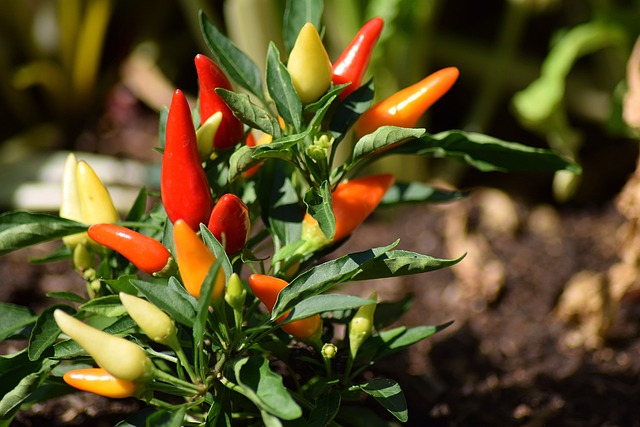Pepper plants are not only delicious but also attractive and easy to care for. With so many varieties available, it can be tough to choose which ones to grow in your garden. However, if you are looking for a plant that will last for years to come and provide you with an abundance of tasty, nutritious peppers, then perennial pepper plants are the way to go.
What are Perennial Pepper Plants?
Perennial pepper plants are varieties of pepper plants that can live for several years in the same spot, as opposed to annual plants which only live for one growing season. Perennial peppers are often hardier and more disease-resistant than annual peppers, making them a great choice for gardeners looking for a low-maintenance, productive plant.
Varieties of Perennial Pepper Plants
There are many different varieties of perennial pepper plants, each with their own unique flavor, heat level, and growing requirements. Some popular varieties include:
- Bishops Crown: This is a rare and beautiful variety that is known for its distinctive crown-shaped peppers. Bishops Crown peppers are medium-hot and have a sweet and fruity flavor.
- Rocoto: Also known as the Peruvian chili, this is a very hot variety that is native to South America. Rocoto peppers are often used in soups, stews, and sauces.
- Peri Peri: This is a fiery hot variety that is widely used in African cuisine. Peri Peri peppers are often used to make spicy sauces and marinades.
- Manzano: This is another hot variety that is native to South America. Manzano peppers are often used in stews and sauces, and they have a unique, fruity flavor.
- Shishito: This is a mild variety that is often grilled or fried and served as a snack. Shishito peppers are a favorite in Japanese cuisine.
Recommendation: Industrialization in Agriculture
How to Grow Perennial Pepper Plants
Growing perennial pepper plants is easy and can be done in a variety of ways, depending on the type of plant you have and your growing conditions. Some general tips for growing these plants include:
- Choose the right location: Perennial pepper plants need full sun, so choose a spot in your garden that gets at least 6 hours of direct sunlight each day.
- Provide proper drainage: Perennial pepper plants are susceptible to root rot, so it is important to plant them in soil that drains well.
- Water regularly: Perennial pepper plants need to be kept consistently moist, but not waterlogged. Water deeply once a week and more frequently during hot, dry weather.
- Fertilize regularly: Perennial pepper plants will benefit from regular fertilization, especially during the growing season. Use a balanced fertilizer or compost to give your plants the nutrients they need.
- Prune regularly: Pruning your pepper plants regularly will help to keep them healthy and promote new growth. Remove any dead or diseased leaves and branches, and trim back any shoots that are growing outside of the main plant.
- Protect from pests: Perennial pepper plants are susceptible to a variety of pests, including aphids, spider mites, and whiteflies. Keep an eye out for any signs of infestation and treat with an insecticide if necessary.
Harvesting and Storing Perennial Pepper Plants
Once your perennial pepper plants have grown and produced a good crop of peppers, it is time to harvest them. The best time to harvest peppers is when they are fully ripe


Pingback: Planting in January: The Ultimate Guide for Gardener on Planting -